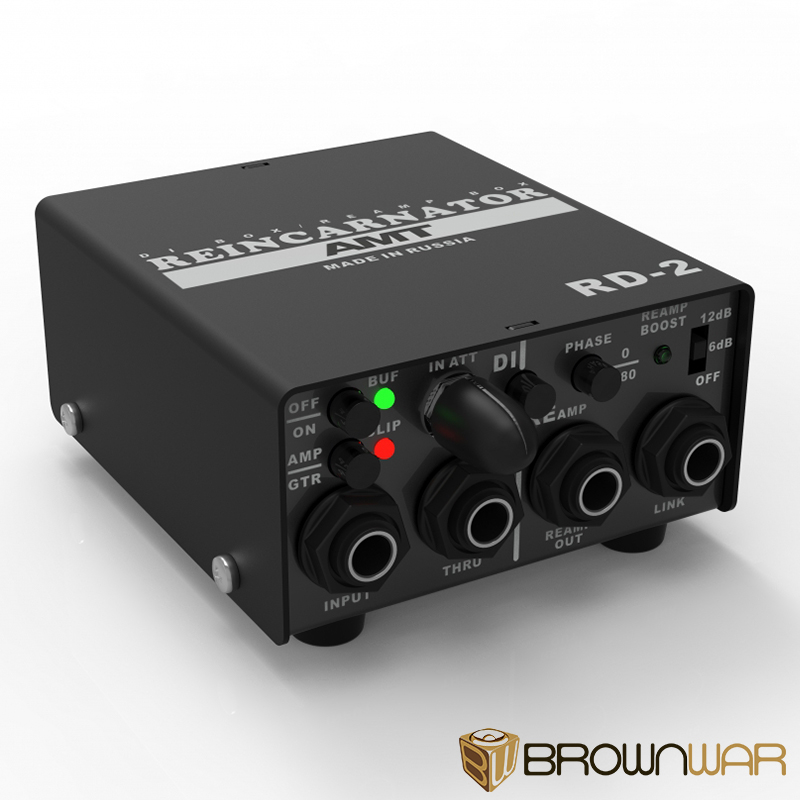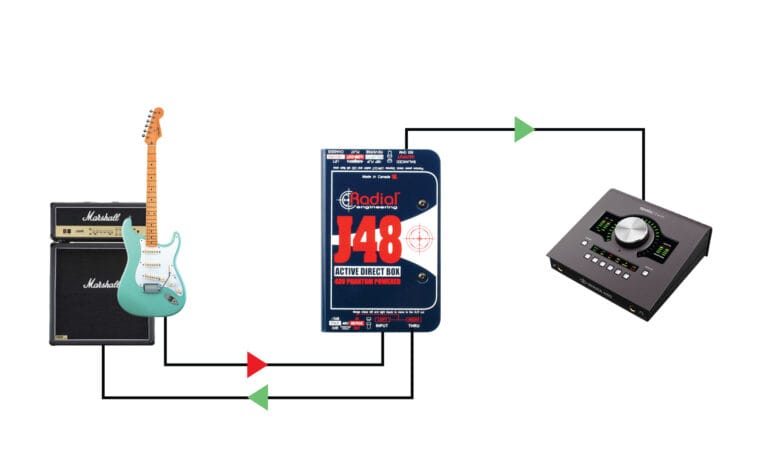

Reamping can help you in these situations! In reamping, you record your usual guitar audio track, along with the direct output from the guitar before it gets to the amp. On a slightly more serious note, I have on occasion realized too late after the session that the guitarist got so excited during the magic take that they played harder and harder, and the track has ended up way more distorted than I realized.

The problem with trying all those options is that your guitarist is itching to shred, and might not want to play the same old Yngwie Malmsteen licks over and over for 25 minutes while you decide whether fresh or flat beer has more “sparkle”. We’ve suggested comparing different mics, combining mics at the front, back, and even inside the cabinet, trying mics at different distances, mics pointing away from the cabinet, mics submerged in a mug of beer, mics swung vigorously in a circle above your head for a Leslie type effect, and on and on. Over the years this magazine has featured many articles on guitar cabinet miking, and there are a lot of articles on the topic in this online library. Reamping is a relatively simple recording technique that gives you options, saves time, and opens the door for new layers of sound.The down and dirty details on the gear and the science of sending recorded guitar tracks back out to an amp However, you might find that re-recording this way provides a more organic sound than digital filters and effects. It’s true that today most DAWs have so many built-in plugins that reamping might seem like an outdated way of reaching new tones. Some reamping examples are sending a vocal track through a reverb pedal, re- recording drums through an amp for additional layers, and reamping bass through guitar amps for distortion. However, if you’re looking to create effects with pedals or distort an instrument, reamping is a great way to find new tones and layers for existing tracks. Of course, most of these instruments wouldn’t normally be amplified. The truth is, however, any direct signal can be reamped, whether it’s vocals, drums, ukelele, you name it. So far we’ve been mostly talking about reamping guitars. However, you won’t need to re-record anything in the process. In the end, you’ll probably spend the same amount of time looking for the right tone whether or not you reamp. In other words, you can more easily separate the performance aspect of recording with the tonal aspect when you reamp. This guitar track can be reamped as many times as possible. A big advantage of reamping is that once you record a perfect clean guitar track you’ll never have to worry about re-recording the performance again. Recording and mixing are time-consuming processes. No matter how you do it, this process really lets you focus on tone more than anything else, and recording is as simple as hitting a button once the mics are moved and the tones are set. If you reamp with multiple amplifiers you can also blend tones to optimize the sound you want (read: Guitar vs. Reamping allows you record with as many tones as you want. If this happens, you either need to re-record the track with a new tone, or spend even more time EQing what’s already there. You could spend hours dialing in a good tone and record it just to discover later on that you’re not completely happy with it.

Perhaps the most obvious reason to reamp is that it gives you room to work. This two step process is typically applied to guitar recording, though reamping can be used for just about anything! This technique has become a staple for many engineers. Reamping is a process where a track is recorded directly then sent back through an amplifier to be recorded again. One of these techniques is called reamping (or re-amping). Matching tones is intricate and laborious work, though there are techniques to make this process easier. It’s also one of the most difficult things to do. Finding the perfect tone for each instrument is one of the most important jobs of an engineer or producer.


 0 kommentar(er)
0 kommentar(er)
